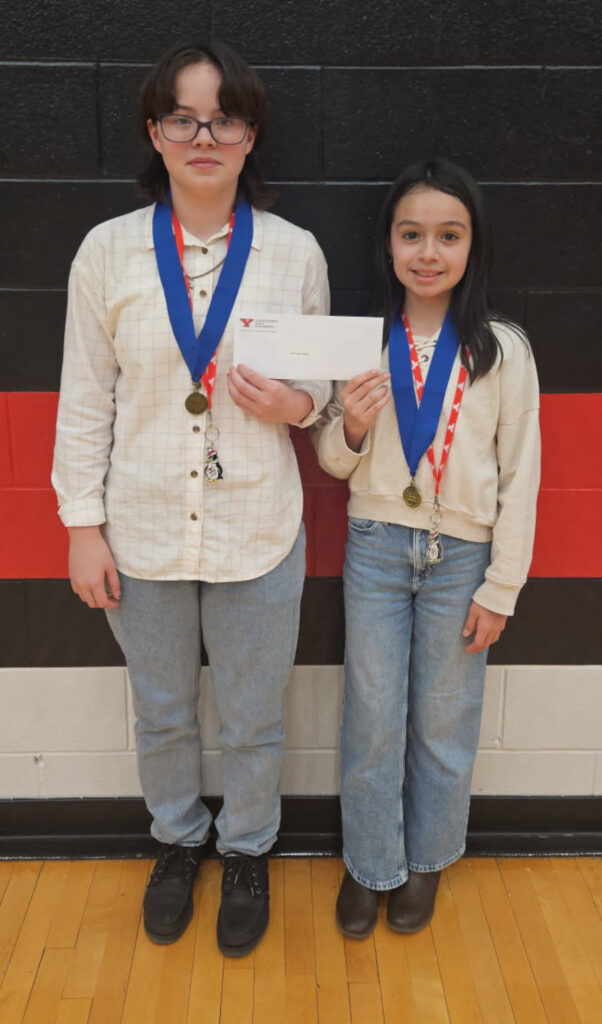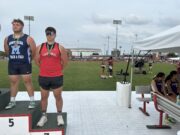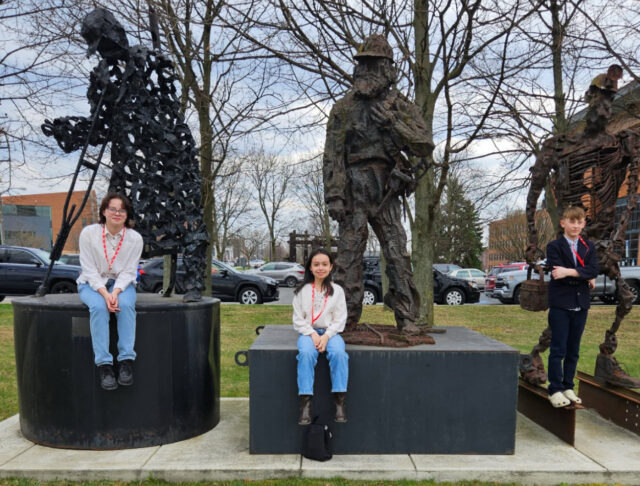For the first time, the Windham School District had three 6th grade students compete at the 2025 Region 4 National History Day Regional Competition. Macabee Takacs, Diana Martin and Mia Miller were selected to participate. Miller and Martin’s group exhibit project of Laika, the dog that went into the space, was selected as a state qualifier on March 29 at Youngstown State University.
“We gave these three the chance to do it to prove themselves and they did very well,” Windham social studies teacher Stephanie Parish-Smith told The Weekly Villager on April 1. “We thought it would be a great experience for them. This is the first time that we have taken sixth graders. We had students who had projects that were developed well enough to compete on this regional level.”

Under the theme of rights and responsibilities, Miller and Martin’s project earned a berth to the state competition on April 26 at Capital University by being selected as the judges’ “Champs Pick.” In addition to the top three projects, the judges also awarded an additional state berth to one project that stood out.
Despite being in the sixth grade, Takacs, Martin and Miller are all members of Parish-Smith’s honors gifted history class.
According to her, Miller and Martin will use the feedback that they received from the judges to edit their project before the state competition.
“The feedback that they got is that they would like us to include more primary sources, so we are looking at different things from the Library of Congress, at different topics to try and find more information or more first-hand accounts,” she noted.
Miller and Martin designed a carboard doghouse and spraypainted it brown, then added white and black scrapbook paper for background and glued information onto their group project.
Miller said that she and Martin chose to make a project about Laika, a stray dog that the Soviet Union launched into space in 1957 on the Soviet spacecraft Sputnik 2 because they each shared an interest in space history.
“It fits right in because when the Soviet Union was doing this, they knew Laika was not going to come back. They did not have the technology for de-orbit yet, so they sent her to space knowing that she was going to die,” Miller said.
Miller added that because the Soviet Union did not tell the public about Laika’s fate until 2002, it also fit the responsibility argument of their project because the outcome demonstrated the Soviet Union’s lack of responsibility in practicing safe experimentation.
She added that she and Martin plan to add more decorations to their group project because while it was very informative, it needs some more work from a design perspective.
“I am very excited,” Miller said. “This is a great opportunity. I have never done this before.”
Miller and Martin will attempt to earn a national berth at the state competition, which would advance them to the national competition in Washington D.C.
Takacs competed individually in the exhibit portion of the competition, designing a project that reflected the infamous Cuban Missile Crisis of 1962, a 13-day standoff between the United States of America and the Soviet Union which almost resulted in a nuclear war.
“My Mom gave me the idea,” Takacs said. “She basically makes me watch videos about historical things and the day before we did this, she made me do that so that was the first thing that came to mind.”
Takacs said that his father gave him some wood pellets and he purchased red, white and blue paper along with toy missiles to build his exhibit.
“We put them on the timeline,” he said. “And then there are these little red weights and they are like paper weights and they had a string of red sticking out of them and it was very eye-catching.”
Takacs’s exhibit argued that President John F. Kennedy had the responsibility to defend the United States against the Soviet Union’s nuclear weapons but also acknowledged that Soviet Premier Nikita Khrushchev had the right to place missiles in the Soviet Union’s allies’ countries.
“I thought that was good that he was able to see history through multiple people’s perspectives. Their feedback was that they were impressed with that as well as how professional and knowledgeable he was,” Parish-Smith said.
Although Takacs’ project was not selected to advance to the state competition, he said that he plans to compete again next year and has already come up with an idea on what his next project will be.


















